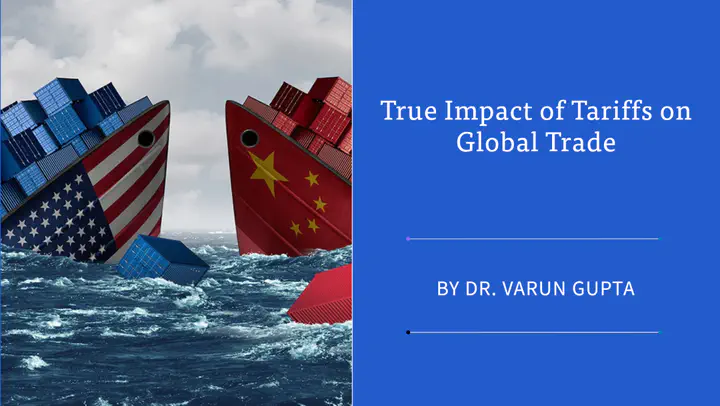The Ripple Effects of Tariffs on Global Trade: Insights for Supply Chain Strategists 🌐🔗

Introduction: The Shifting Sands of International Trade Policy 🏛️🌊
We find ourselves at a critical juncture in the ever-evolving landscape of global trade wars. China’s recent imposition of reciprocal tariffs on European farm produce, retaliating against EU tariffs on Chinese electric vehicles (EVs), is the latest tremor in an ongoing seismic shift in international trade relations. This event, reminiscent of the US-China trade tensions that have dominated economic discourse in recent years, is a stark reminder of the interconnected nature of our global economy. 🇨🇳🇪🇺🇺🇸
Historical Context: Lessons from the US-China Tariff Saga 📜🔍
The trade relationship between the United States and China offers a compelling case study on tariffs:
- Trump tariffs: The Trump administration’s aggressive stance led to tariffs on hundreds of billions of dollars worth of Chinese imports.
- China’s Countermove: Beijing responded with retaliatory tariffs, notably targeting US agricultural products.
- Current Landscape: The Biden administration, while adopting a different tone, has largely maintained these tariffs, viewing them as crucial leverage in ongoing negotiations. 💼🏛️
This protracted dispute has reshaped global supply chains, forcing companies to reevaluate their sourcing strategies and risk management approaches.
Debunking Common Tariff Myths: A Nuanced Analysis 🧠💡
In my years of studying, writing, and advising on international trade, I’ve observed that the true impact of tariffs is far more nuanced than many realize:
-
The Protectionism Paradox: While tariffs can offer short-term shelter to domestic industries, they often stifle long-term innovation and economic efficiency.
-
The Ripple Effect of Trade Wars: Escalating tariffs typically reduces trade volumes, potentially harming all economies involved, not just the intended targets.
-
The Revenue Mirage: Yes, tariffs increase government coffers, but at what cost to consumers and businesses? The net economic impact is often negative. 📊🤔
Learning Tariffs with an Example: Different Impact of Steel Tariffs 🏗️🔬
Let’s examine the steel industry to illustrate the varied effects of tariffs:
- Consumers: Face higher prices on steel-containing goods (e.g., automobiles, appliances)
- Suppliers: Domestic steel producers see short-term gains while steel-consuming industries grapple with increased costs
- National Impact: Steel-exporting nations experience reduced demand, while importing nations may see job growth in steel production but job losses in steel-consuming sectors
The ripple effects are determined by:
- Product elasticity
- Supply chain structure
- Market demand dynamics
- Availability of substitutes
This complexity underscores why simplistic views of tariffs as uniformly “good” or “bad” are misguided.
Strategic Imperatives for Supply Chain Leaders 🔍🚀
Based on my consulting work and research experience in supply chain risk management, I recommend the following strategies:
-
Diversification: Reduce dependency on single-source suppliers or markets
-
Scenario Planning: Develop robust strategies for various tariff scenarios
-
Localization: Explore #reshoring or #nearshoring options where feasible
-
Digital Transformation: Leverage advanced analytics and #AI for enhanced supply chain visibility and agility
-
Collaborative Ecosystems: Foster strong partnerships across your value chain to collectively mitigate uncertainties
Emerging Trends in Tariff Policies: What’s on the Horizon 🔮📈
As we look to the future, several trends are likely to shape the tariff landscape:
- Targeted tariffs in strategic sectors (e.g., semiconductors, green technology)
- Rise of non-tariff barriers as alternatives to traditional tariffs
- Increased emphasis on regional trade agreements to mitigate global trade tensions
- Tariffs as tools for enforcing environmental and labor standards
- Continued volatility due to geopolitical shifts and economic nationalism
Conclusion: Charting a Course Through Turbulent Waters 🧭🌊
As we’ve explored the intricate world of tariffs and their far-reaching impacts, one thing is abundantly clear: the global trade landscape is in flux, presenting challenges and opportunities for businesses worldwide.
In my two decades as a supply chain management professor and consultant, I’ve observed that periods of trade policy upheaval, like the one we’re experiencing now, often serve as catalysts for innovation and strategic reinvention. The thriving companies view these challenges not as insurmountable obstacles but as chances to refine their operations, diversify their supply bases, and forge stronger partnerships across their value chains.
Consider this: every tariff imposed creates ripples that extend far beyond its immediate target. We must think several moves ahead for supply chain professionals, anticipating not just the direct impacts of trade policies but their second and third-order effects.
I encourage you to reflect on your own experiences:
- How have recent trade policy shifts affected your industry’s competitive dynamics?
- What strategic pivots have yielded the most resilience in your supply chain?
- In what ways are you preparing your organization for potential future trade disruptions?
The key to success lies in cultivating adaptability, deepening our understanding of global economic interdependencies, and fostering collaborative relationships that can weather geopolitical storms.
I’m keen to hear your thoughts and experiences. Let’s continue this critical conversation in the comments. Your insights not only enrich our collective understanding but also help shape the future of our field. 🚢🌟
#GlobalTradePolicy #SupplyChainResilience #TariffImpacts #InternationalBusiness #EconomicStrategy #TradeWars #SupplyChainInnovation #GeopoliticalRisk
References:
-
Amiti, M., Redding, S. J., & Weinstein, D. E. (2019). The impact of the 2018 tariffs on prices and welfare. Journal of Economic Perspectives, 33(4), 187-210.
-
Fajgelbaum, P. D., Goldberg, P. K., Kennedy, P. J., & Khandelwal, A. K. (2020). The return to protectionism. The Quarterly Journal of Economics, 135(1), 1-55.
-
Blanchard, E. J., Bown, C. P., & Chor, D. (2019). Did Trump’s trade war impact the 2018 election? National Bureau of Economic Research Working Paper No. w26434.
-
World Trade Organization. (2023). World Trade Report 2023: Adapting to a changing global economy.
-
European Commission. (2024). Trade Policy Review - An Open, Sustainable and Assertive Trade Policy.